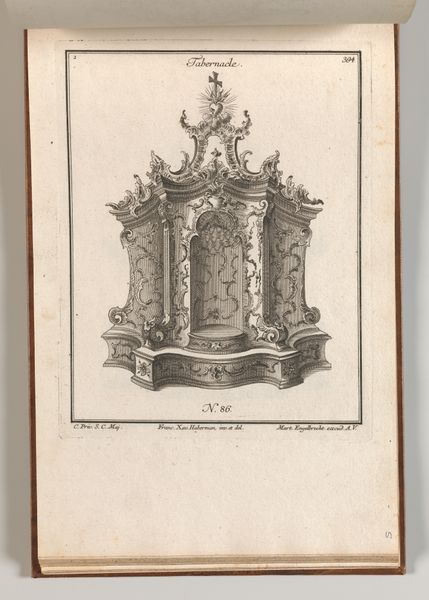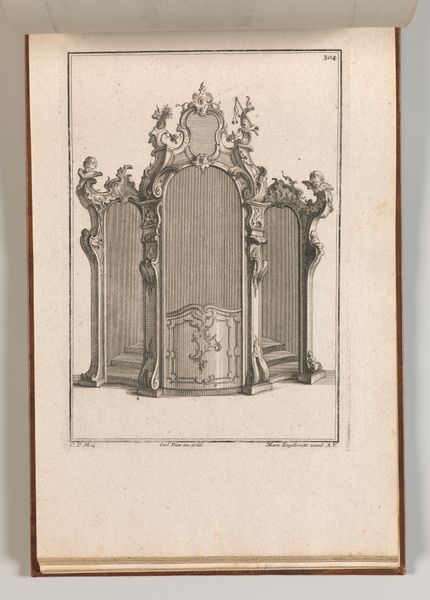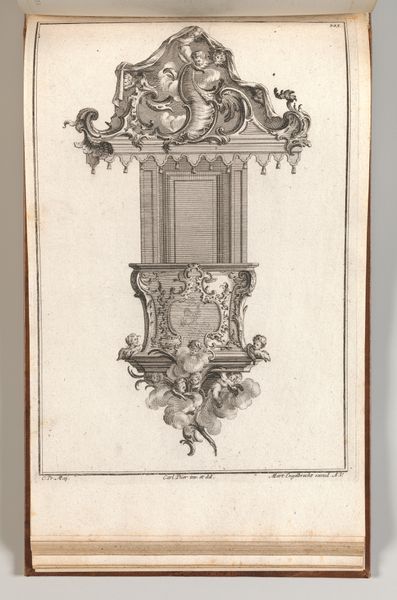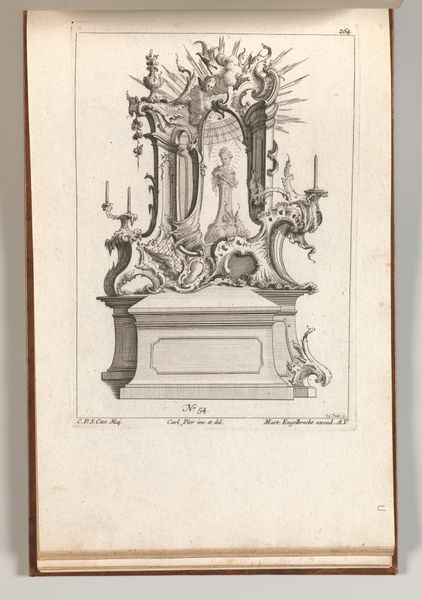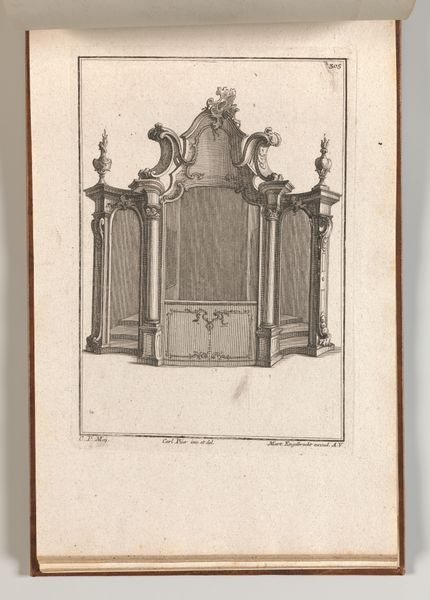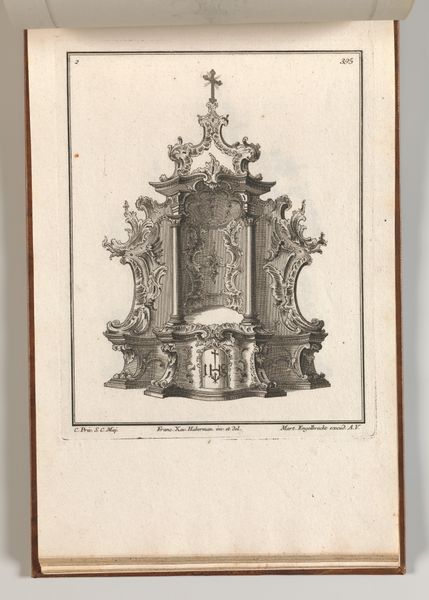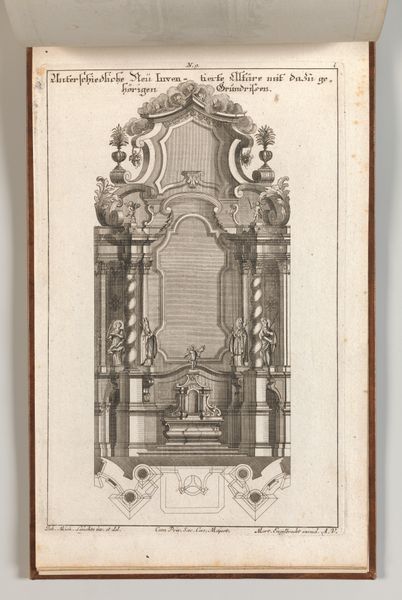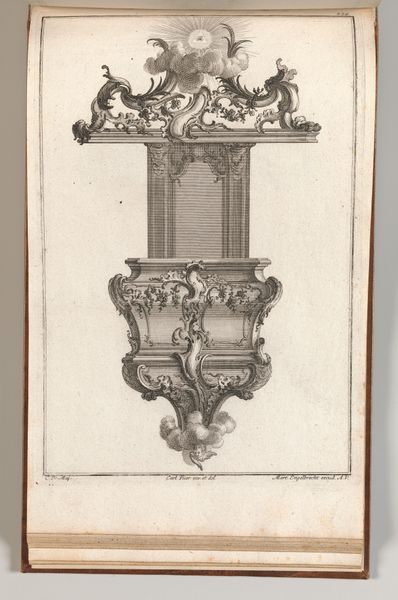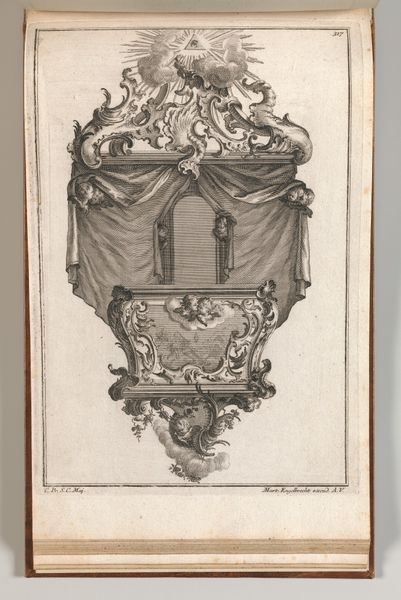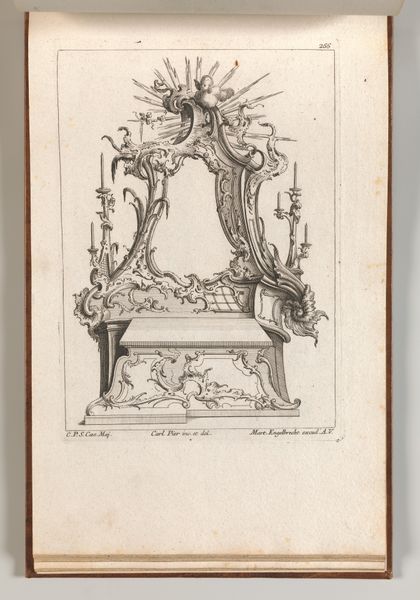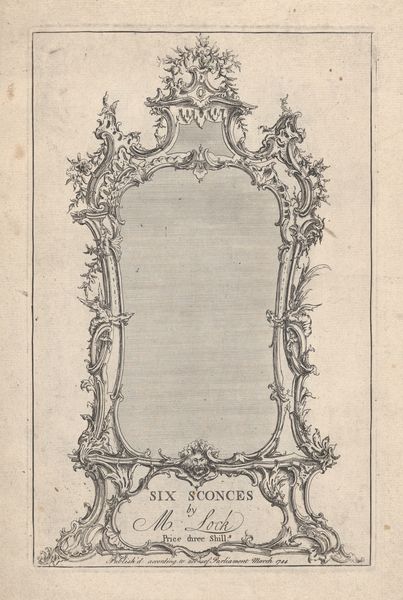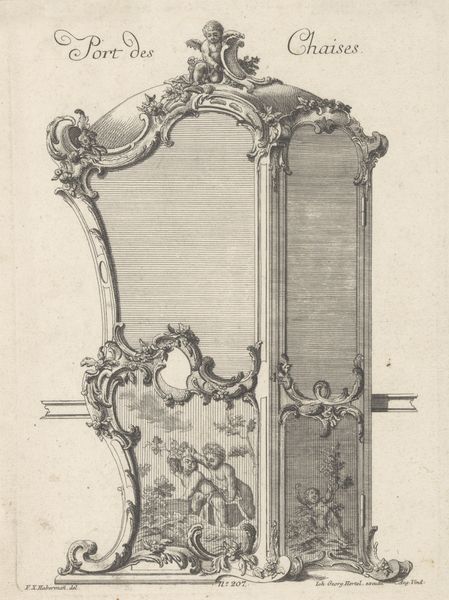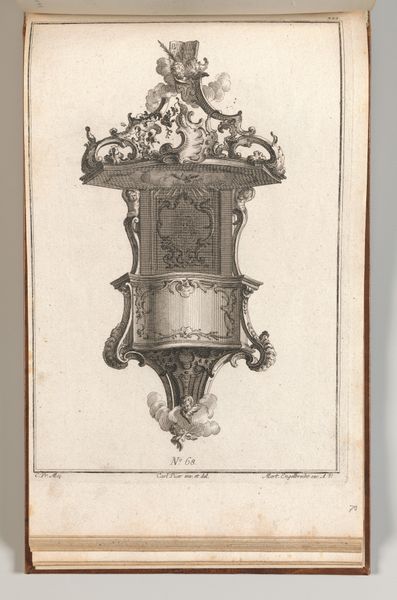
Design for a Confessional, Plate 1 from an Untitled Series of Designs for Confessionals 1745 - 1755
0:00
0:00
drawing, print, etching, architecture
#
drawing
#
baroque
# print
#
etching
#
form
#
line
#
history-painting
#
decorative-art
#
architecture
Dimensions: Overall: 8 7/16 × 13 3/4 in. (21.5 × 35 cm)
Copyright: Public Domain
Curator: At first glance, it evokes this feeling of intense introspection, but also confinement, which I think is such a fascinating duality to encounter right off the bat. Editor: Exactly. We're looking at Carl Pier's "Design for a Confessional, Plate 1 from an Untitled Series of Designs for Confessionals," etched sometime between 1745 and 1755. Notice the dense, linear style typical of baroque decorative art, all swirling ornamentation and yet such rigid purpose. Curator: The meticulous detail is incredible. I’m thinking about the contrast between the intended spiritual experience, which should ideally be expansive and liberating, and the very physical structure of the confessional, which, as you mentioned, is so restrictive. I keep envisioning it not only as a place to atone for misdeeds, but a dark, cozy space away from the judgemental eyes of others. What symbolism resonates with you, seeing it? Editor: The overall shape for me points to the architectural symbolism of doorways as liminal spaces—thresholds between states of being. To me, it speaks to this journey from transgression to absolution. Curator: Right! It’s this idea of entering one way and leaving…transformed? I’m tickled by the theatricality, actually; the little staircase hints that the ritualistic performance is so ornate, almost baroque-and even with this being a penance it still gives performance. Editor: Absolutely, it is the theater of moral reckoning. Each line, flourish, and curve emphasizes confession's performance for a higher authority. Thinking of cultural memory, confessionals, especially historically, stood as a cultural mechanism to regulate conduct through moral judgement. It’s intriguing that we’re looking at design plans instead of a fully realized confessional. What are the cultural echoes resonating for you right now? Curator: I'm drawn to the designer's intention and how it lives as a reflection on power dynamics, I mean, you walk into this small space, both humble and exposed… Ultimately this artwork gives me insight into societal notions of both faith and authority, don’t you think? Editor: I wholeheartedly agree. Seeing this has allowed me to think deeply about cultural continuity embedded in visual form. Curator: I love that idea, it shows even now there can still be reflection even when things remain the same.
Comments
No comments
Be the first to comment and join the conversation on the ultimate creative platform.
